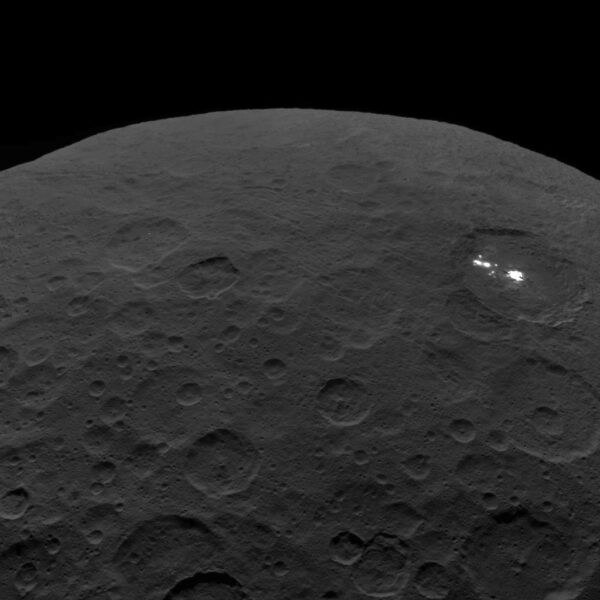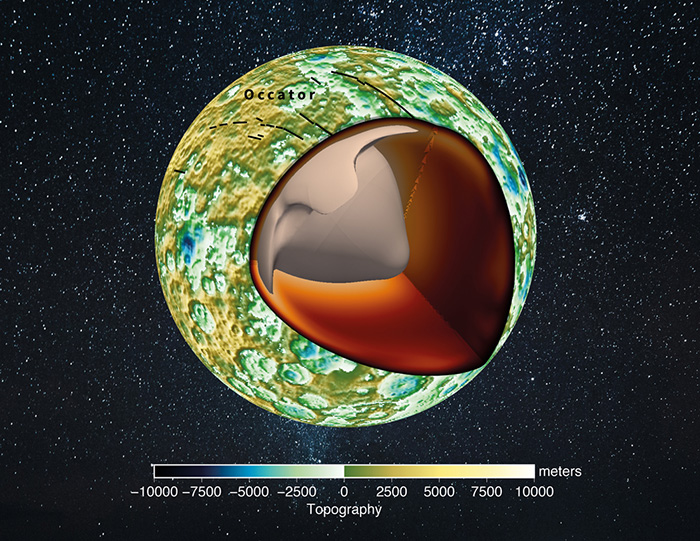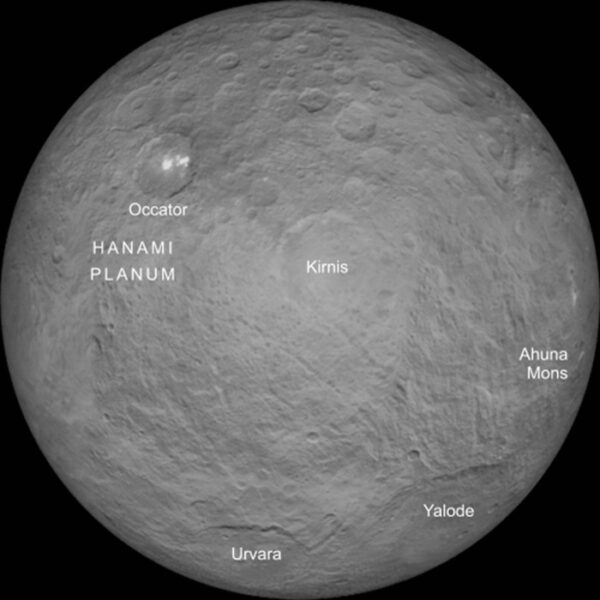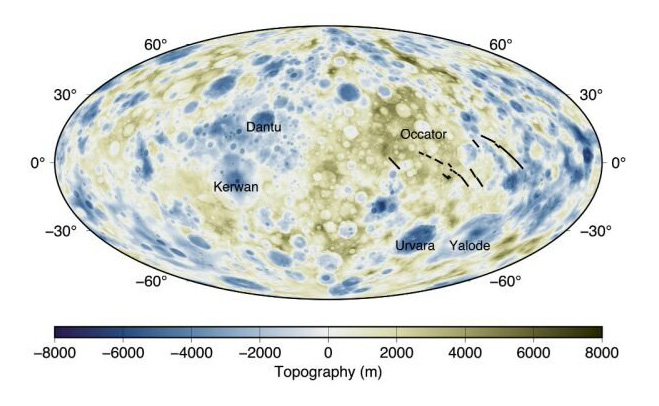Radioactive heating in this asteroid’s early days may have destabilized the small world, creating asymmetric surface features.

NASA / JPL-Caltech / UCLA / MPS / DLR / IDA
A team of U.S. planetary scientists has shown that unexpected surface features on the dwarf planet Ceres can be explained by radioactive decay in its interior long ago. If they are right, their model could explain features not just on other dwarf planets, but also on some of the icy moons in the outer solar system.
Ceres is the largest object in the asteroid belt and was classified as a dwarf planet back in 2006. Given its distance and size – Ceres is about 50 times smaller than the Moon — our knowledge of its surface features was sketchy until NASA's Dawn mission arrived in 2015. Scientists were surprised to find evidence of past hydrothermal, cryovolcanic, and tectonic activity on its surface, as the dwarf planet was previously considered too small to have been geologically active. The hunt began for the heat source that drove this activity.
Geoscientist Scott King (Virginia Tech College of Science) tried to get to the bottom of the mystery using his experience modelling bigger worlds. The rocky planets formed from the collision of many smaller objects, and their gravity is strong enough to maintain the heat from these collisions in their interiors. Ceres is too small for this to happen, so it would have started out cold. Some other icy bodies in the solar system, such as the moons of Jupiter and Saturn, are warmed by their host planet’s tidal pull, but that can’t be the case for Ceres either.
According to King's new model, the radioactive decay of elements, including uranium and thorium, warmed up Ceres's interior after its formation. Crucially, King found this made Ceres's interior unstable. "What I would see in the model is, all of a sudden, one part of the interior would start heating up and would be moving upward and then the other part would be moving downward," King says.

Scott King / CC BY 4.0
This could explain one of the most baffling surface features that Dawn revealed: Hanami Planum. This vast, 550-kilometer-wide (340-mile-wide) plateau is Ceres’ third largest geological feature. Fractured rocks surround the plateau. According to King, a rising portion of the interior may have stressed the surface, creating the plateau within 1 to 2 billion years of Ceres’ formation.
"We've shown . . . that radiogenic heating all on its own is enough to create interesting geology," King says.

Mark Fisher / eSky; Surface Map: NASA / JPL-Caltech / UCLA / MPS / DLR / IDA

Scott King
Erik Asphaug (The University of Arizona), who was not involved in the research, thinks the mystery isn't quite solved yet. “It is a clever, sophisticated model but . . . I am not convinced this would be the only or even the best theory,” he says. Asphaug points to the fact that King's model assumes Ceres to be spherical, but the collisions that formed it would have rendered a young Ceres lopsided. “I think being born lopsided does a lot geophysically, and that needs to be included in such models,” Asphaug says.
Surface-penetrating radar, similar to the technology flying on the upcoming Europa Clipper mission to Jupiter's icy moon, could test King’s ideas. But that would require a new orbiter to visit the dwarf planet.
Should King's model turn out to be sound, Asphaug thinks it could have implications beyond the asteroid belt. “It appears to be a quite general model that would be very applicable to studies of all the ‘icy dwarfs,’ which includes Ceres, Dione, Rhea, Miranda, Atlas, Haumea and Charon.”
 0
0









Comments
You must be logged in to post a comment.